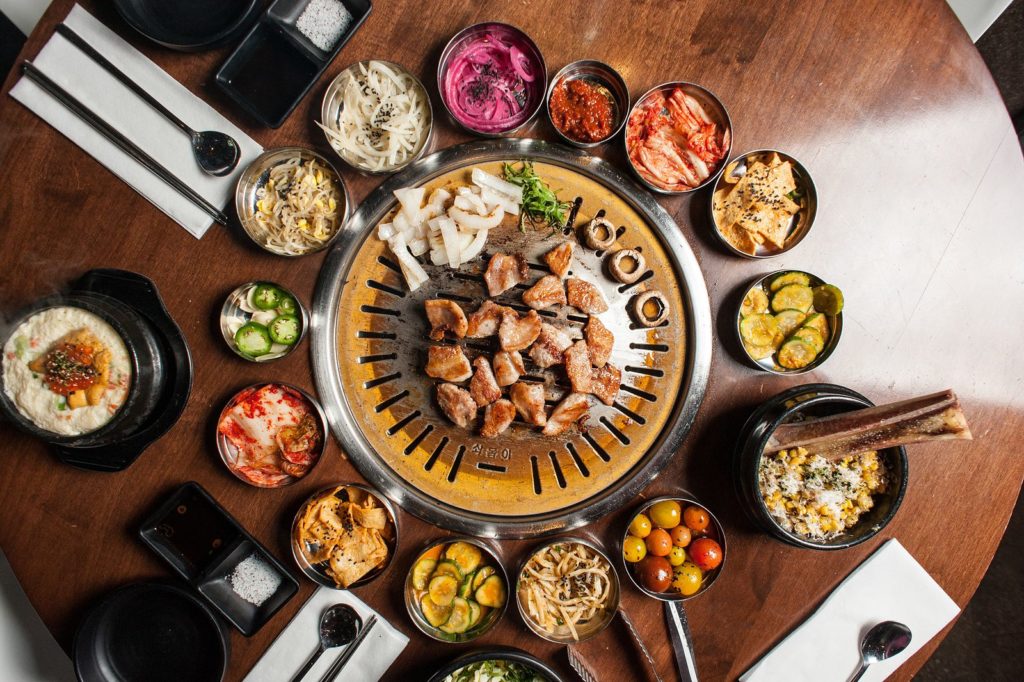Have you ever wanted to enjoy the mouthwatering flavors of Korean BBQ in the comfort of your own home? Hosting a Korean BBQ at home is not only a fun and interactive dining experience but also an opportunity to explore delicious and diverse flavors. In this guide, we’ll walk you through everything you need to know to create the perfect Korean BBQ at home, from essential equipment and ingredients to step-by-step instructions and tips. Learn how to host an amazing Korean BBQ at home with our complete guide. Discover essential equipment, ingredients, and step-by-step instructions for a delicious and fun dining experience.
Essential Equipment for Korean BBQ at Home
1. Portable Grill A portable grill is a must-have for Korean BBQ at home. Options include electric, gas, or charcoal grills, each offering different advantages. Electric grills are convenient and easy to use, while charcoal grills provide that authentic smoky flavor.
2. Grill Pan or Stovetop Griddle If you don’t have a portable grill, a grill pan or stovetop griddle works just as well. These options allow you to achieve similar grilling results on your kitchen stove.
3. Tongs and Scissors Tongs are essential for handling and flipping the meat on the grill. Korean BBQ often involves cutting meat into bite-sized pieces while grilling, so having a pair of kitchen scissors is also handy.
4. Serving Platters and Small Bowls Serving platters are perfect for arranging the raw meats and vegetables before grilling. Small bowls are used for serving dipping sauces, banchan (side dishes), and other accompaniments.
Essential Ingredients For Korean BBQ at Home
1. Meats
- Bulgogi: Thinly sliced beef marinated in a sweet and savory sauce.
- Galbi: Marinated beef short ribs, known for their rich and juicy flavor.
- Samgyeopsal: Pork belly slices that are grilled until crispy.
- Dak Galbi: Spicy marinated chicken, perfect for those who enjoy a bit of heat.
- Seafood: Shrimp, squid, and scallops are great options for adding variety to your BBQ.
2. Vegetables
- Mushrooms, bell peppers, zucchini, and onions are popular choices for grilling.
- Leafy greens like lettuce and perilla leaves are used for wrapping grilled meats.
3. Banchan (Side Dishes)
- Kimchi: Fermented vegetables that add a spicy and tangy kick.
- Japchae: Stir-fried glass noodles with vegetables.
- Pickled Radishes: Refreshing and crunchy, perfect for cleansing the palate.
4. Dipping Sauces
- Ssamjang: A thick, spicy paste made from fermented soybeans, chili paste, and sesame oil.
- Sesame Oil Dip: A simple mix of sesame oil, salt, and pepper.
- Soy Sauce Dip: A soy sauce-based dip with garlic and green onions.
Step-by-Step Instructions
Step 1: Prepare the Ingredients
- Marinate the meats. For bulgogi and galbi, prepare the marinades by mixing soy sauce, sugar, garlic, sesame oil, and other seasonings. Let the meats marinate for at least 2 hours, preferably overnight, to absorb the flavors.
- Chop the vegetables into bite-sized pieces and arrange them on a platter.
- Prepare the banchan and set them in small bowls on the table.
Step 2: Set Up the Grill
- Place the portable grill or grill pan in the center of the dining table.
- Preheat the grill according to the manufacturer’s instructions. For charcoal grills, allow the coals to become hot and ashy before starting.
Step 3: Start Grilling
- Begin by grilling the non-marinated meats and vegetables. This prevents the marinade from burning and sticking to the grill.
- Use tongs to flip the meats and vegetables, ensuring they cook evenly on all sides.
- For marinated meats, grill them until they are nicely caramelized and cooked through.
Step 4: Assemble Lettuce Wraps
- Place a piece of grilled meat on a lettuce leaf.
- Add a small amount of rice, a slice of garlic, and a dab of ssamjang.
- Wrap the lettuce around the fillings and enjoy a flavorful bite.
Step 5: Enjoy with Banchan and Dipping Sauces
- Alternate between grilling and eating, enjoying the different flavors and textures.
- Dip the grilled meats into the various dipping sauces for added flavor.
- Pair the meats with banchan to balance out the richness of the grilled foods.
Tips for the Perfect Korean BBQ
1. Use Fresh and High-Quality Ingredients Fresh, high-quality meats and vegetables make a significant difference in the flavor and overall experience of your BBQ.
2. Marinate Meats Overnight For the best flavor, marinate the meats overnight. This allows the flavors to fully penetrate and tenderize the meat.
3. Keep the Grill Clean To prevent sticking and ensure even cooking, clean the grill grates regularly during the grilling process.
4. Serve a Variety of Banchan Offering a variety of banchan adds complexity and balance to the meal. Include different textures and flavors to complement the grilled meats.
5. Enjoy the Process Korean BBQ is as much about the experience as it is about the food. Take your time, enjoy the grilling process, and savor the communal dining experience with friends and family.
Korean BBQ: A Culinary Tradition
Korean BBQ is deeply rooted in Korean culture and tradition. The communal style of cooking and eating is a reflection of the importance of family and social bonds in Korean society. The concept of grilling meat at the table dates back centuries and continues to be a beloved practice in Korean households and restaurants.
The diverse array of meats, vegetables, and banchan served at a Korean BBQ meal represents the rich culinary heritage of Korea. Each region has its own unique variations and specialties, adding to the diversity and depth of Korean BBQ.
Health Benefits of Korean BBQ
While Korean BBQ can be indulgent, it also offers several health benefits when enjoyed in moderation:
1. Balanced Diet Korean BBQ meals often include a variety of meats, vegetables, and fermented foods, providing a balanced mix of proteins, vitamins, and probiotics.
2. Fresh Ingredients The emphasis on fresh, high-quality ingredients means you’re consuming wholesome and nutritious foods.
3. Customizable Portions The interactive nature of Korean BBQ allows you to control your portion sizes and choose the ingredients that suit your dietary preferences.
4. Fermented Foods Banchan like kimchi are rich in probiotics, which promote a healthy gut and improve digestion.
Conclusion
Hosting a Korean BBQ at home is a delightful and interactive way to enjoy a meal with friends and family. With the right equipment, fresh ingredients, and a little bit of preparation, you can recreate the authentic flavors of Korean BBQ in your own kitchen. Follow this guide to ensure a successful and enjoyable Korean BBQ experience that will impress your guests and leave everyone wanting more. So, gather your ingredients, fire up the grill, and embark on a culinary adventure that celebrates the rich and diverse flavors of Korean cuisine.







